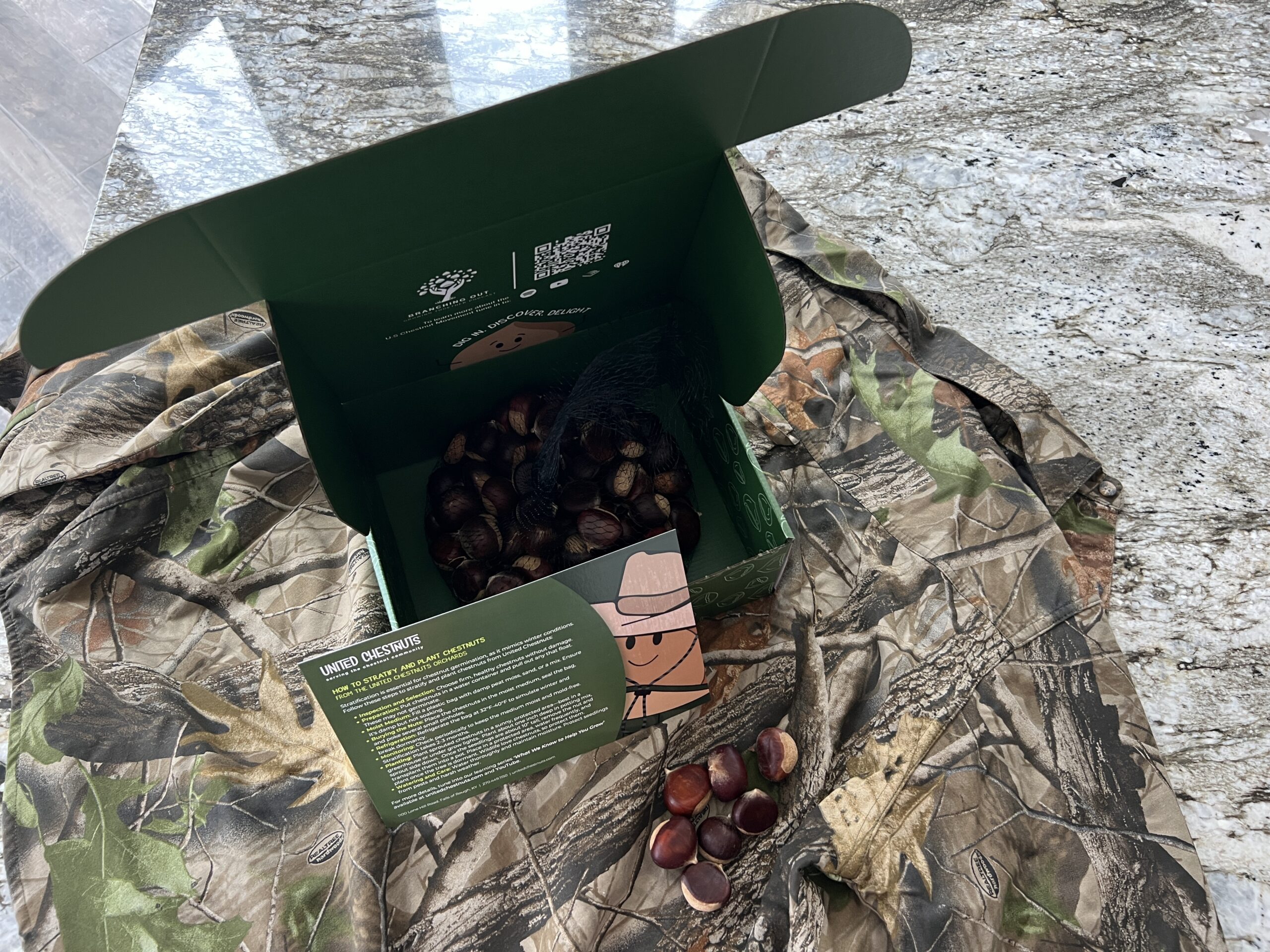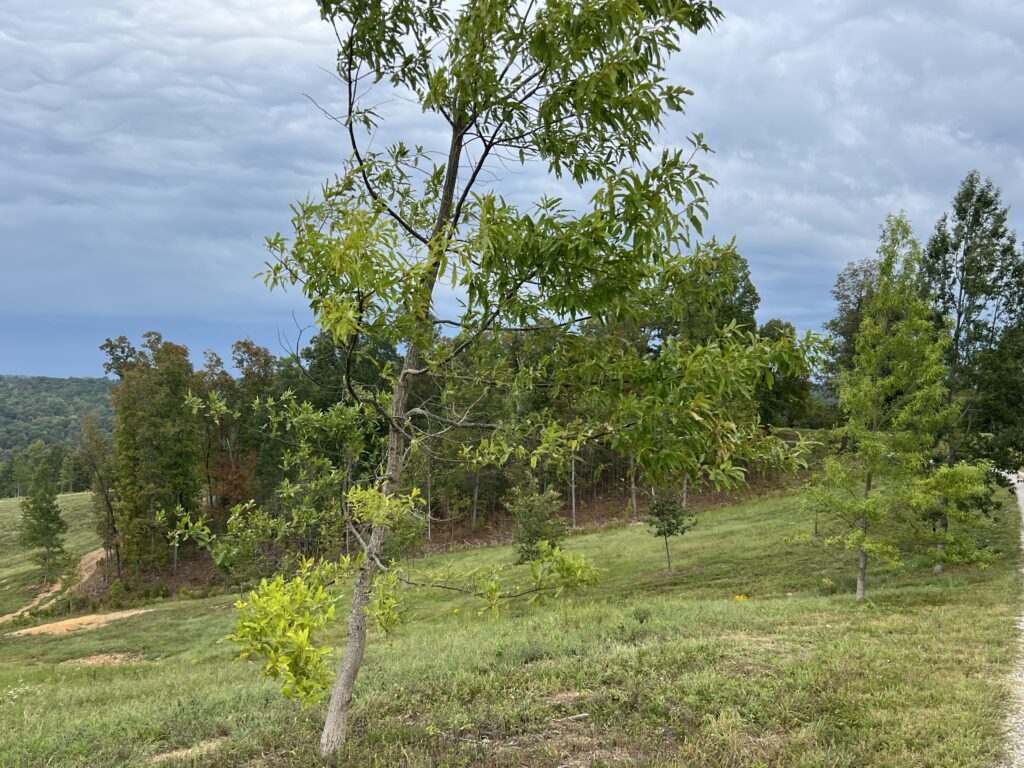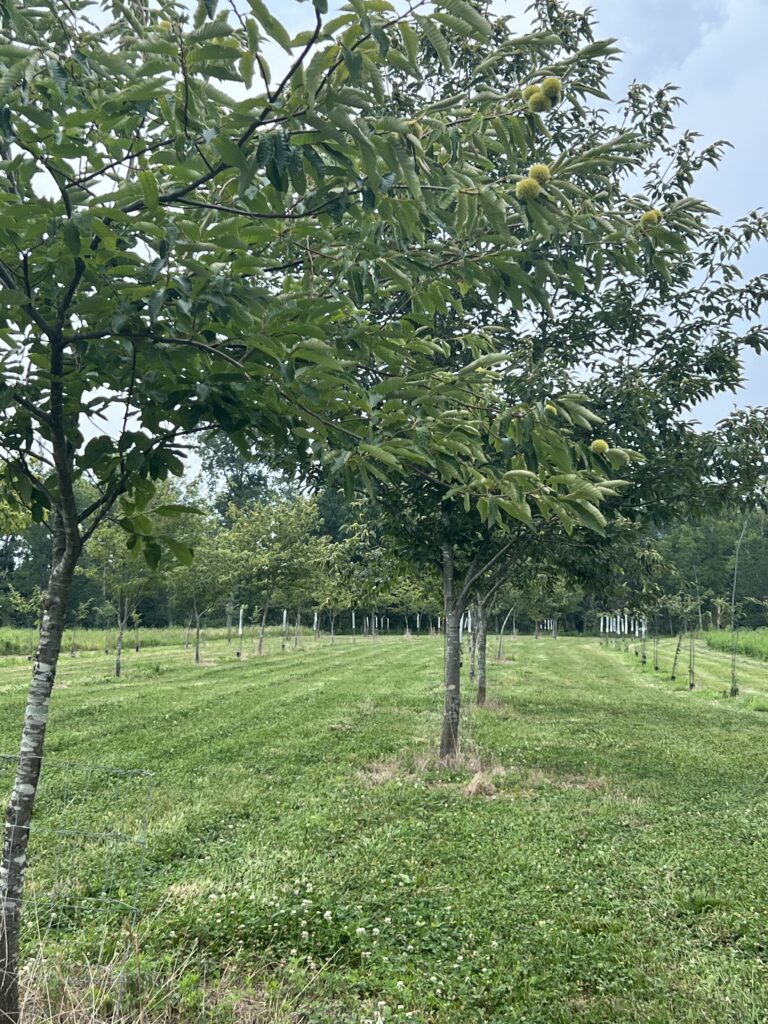
When it comes to enhancing your hunting property, food plots play a crucial role in attracting and sustaining wildlife. But did you know there’s a way to take your food plots to the next level, not only providing a nutrient-dense food source but also supporting sustainable land management? Incorporating chestnut trees into your food plots can do just that.
Why Chestnut Trees?
For centuries, American chestnuts were a staple in forests across the country, providing abundant food for wildlife. However, the chestnut blight of the early 20th century nearly wiped them out. Fortunately, blight-resistant chestnut trees are making a comeback, and they offer significant benefits for hunters looking to create a more attractive and productive hunting environment.
Here are a few reasons why chestnut trees are a game-changer for food plots:
1. High Nutritional Value for Wildlife
Chestnuts provide high-energy forage for deer, turkeys, and other wildlife. Unlike acorns, which are high in tannins and can be difficult for some animals to digest, chestnuts are low in tannins, making them more palatable and easier for animals to digest. This makes chestnuts a prime food source during hunting season when wildlife needs to bulk up for the winter months.
2. Reliable Annual Crop
While oaks produce acorns in cycles and can be unreliable from year to year, chestnut trees bear fruit annually once they mature. This consistency ensures that wildlife returns to your plot year after year, creating a dependable hotspot for hunting. Chestnuts typically drop in early fall—perfect timing for attracting deer and other game during peak hunting season.
3. Long-Term Investment
Planting chestnut trees is a long-term investment in your hunting property. Once established, chestnut trees can live for decades, providing a sustainable and consistent food source for future hunting seasons. By incorporating chestnuts, you’re not only improving your current hunting opportunities but also creating a legacy for future generations of hunters.
How to Incorporate Chestnut Trees Into Your Food Plot
1. Choose the Right Spot
Chestnut trees thrive in well-drained, sunny locations. When selecting a site within your food plot, look for elevated areas where water doesn’t collect. Give each tree enough space to grow—a good rule of thumb is to plant them 30-40 feet apart.
2. Mix With Other Forages
Chestnuts work well alongside traditional food plot plants like clover, brassicas, or cereal grains. These annuals provide forage for wildlife while your chestnut trees mature. By mixing perennials and annuals with chestnut trees, you create a multi-layered food plot that offers nutrition throughout the year.
3. Protect Your Investment
It’s crucial to protect young chestnut trees from being damaged by deer and other wildlife. Use tree shelters or fencing to prevent browsing until the trees are well-established, typically around 5-7 years. Once the trees are mature enough, they can handle wildlife pressure while continuing to produce an abundant food source.
United Chestnuts Sells Chestnut SeeDS and Hybrid Chestnut Seedlings
4. Plan for Long-Term Success
Chestnuts require proper care, especially in their early years. Regular watering, mulching, and protection from pests and disease are key to ensuring your trees grow strong and healthy. With good management, chestnuts will become a low-maintenance, high-value asset to your hunting property.
Attracting More Than Just Deer
While chestnuts are a favorite of deer, they also attract a variety of other wildlife, including wild turkeys, squirrels, and even bears. For hunters interested in diverse game opportunities, chestnut trees help create a richer, more diverse ecosystem on your property.
A Sustainable Choice
Incorporating chestnut trees into your food plot isn’t just about attracting wildlife; it’s about making a choice for the future. These trees support healthy, sustainable land management practices and help restore a vital species to our forests.
Ready to Get Started?
At United Chestnuts, we specialize in providing high-quality chestnut trees suited for food plots. Our trees are grown with the hunter in mind, ensuring you have access to healthy, hardy trees that will thrive in your location. Check out our shop or contact us today to learn more about how chestnut trees can elevate your hunting property.

This post not only introduces the benefits of chestnut trees but also offers practical tips for incorporating them into food plots. It positions chestnuts as both a sustainable choice and a long-term investment for hunters looking to improve their land. What do you think? Would you like to make any adjustments or add more specific details?
Subscribe to the United Chestnuts blog and consider following the chestnut industry podcast Branching Out: Growing Together. In our shop we feature a Hunter’s Box special. Happy Hunting!
